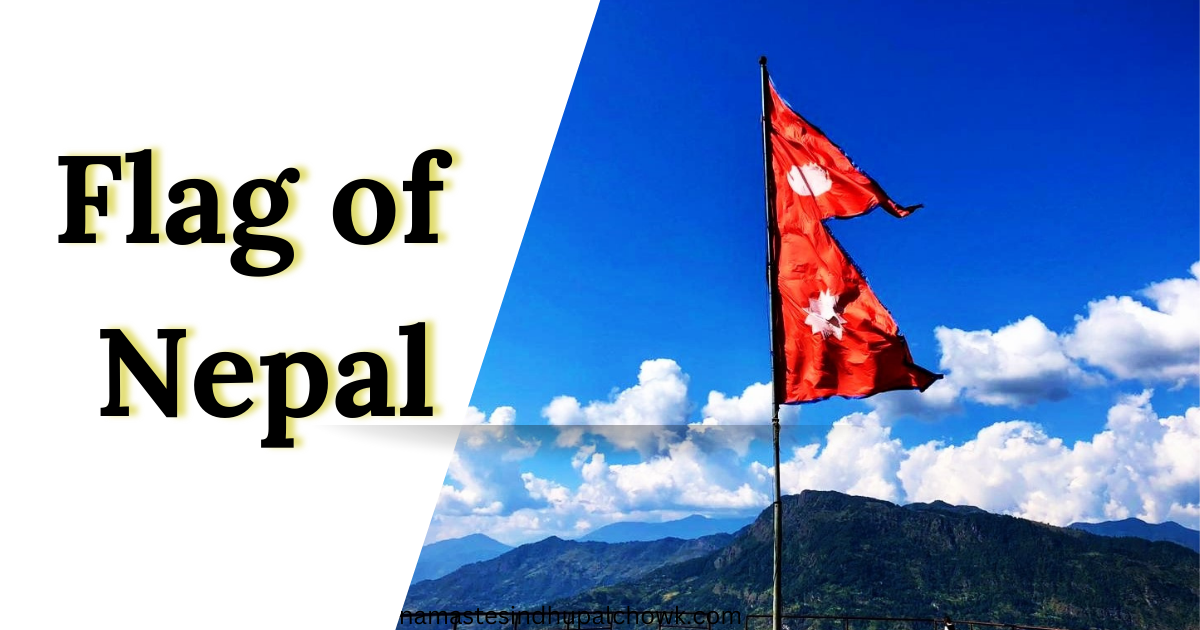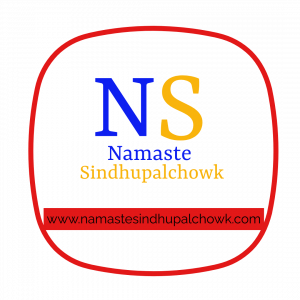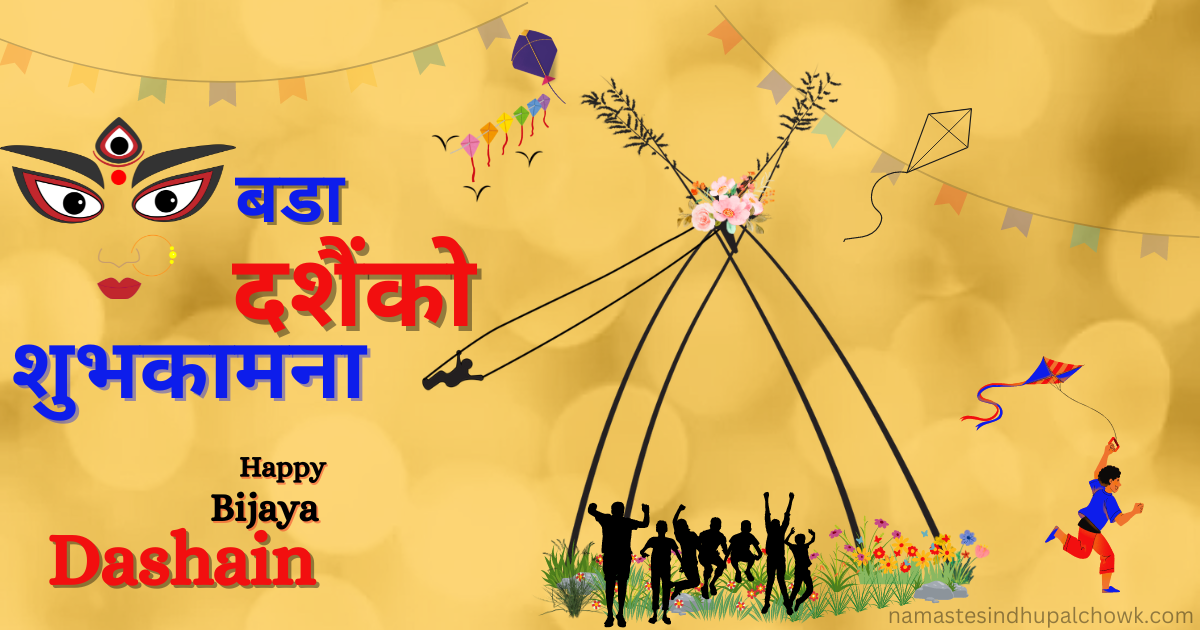The flag of Nepal is unlike any other flag in the world. Nepal's main identity of every country is the national flag. Every country has given special priority to its national flag. Whether it is an independent sovereign nation or a colonial nation, they are using their national flag. The national flag of almost all countries is quadrangular in shape.
The national flag of Nepal is made up of two triangles. A combination makes the flag of two single pennons or double pennons. The national flag of Nepal is unique in the world. It is also considered as the oldest flag of the world. History shows that the flags are being used since Nepal was not named. The flag of Nepal, which has been used since tradition, is also considered a symbol of religion and spirituality. Therefore, in the old temples in different places of Nepal, different triangular flags can be seen even now.
National Flag Day is celebrated in Nepal every year on the 1st of Poush to explain the importance of the Nepal national flag.
According to the Constitution of Nepal - 2072, " As mentioned in Article 8 of the Constitution of Nepal, 2072, the traditional flag of Nepal is the national flag of Nepal with two triangles with a crimson red ground and a dark blue border slightly connected, a white shape with eight angles in the center of the moon and a white shape of the sun with twelve angles at the bottom. It's a flag of Nepal."
About Nepal Flag
How and who made the national flag of Nepal in the period of history? There is no such thing but its development can be found in history. Prithvi Narayan Shah introduced the current national flag of Nepal during the creation of the state of Nepal after the victory of the Kathmandu Valley. Before the year 2019, there was no definite arrangement regarding the flag of Nepal. The design, color, etc. of the flag that is currently in use has become uniform after 2019 BS (1962 AD)
The origin of the Nepalese flag is not exactly known. However, triangular flags with sun and moon symbols have been used in Nepal since the Gopal and Lichchavi dynasties. Historians believe that the shape of the flag is also seen on "Mananka" coins introduced by King Mandev of the Lichchavi dynasty.
The Lichchavi kings used sun-printed flags as flags. Since the Malla kings also considered their dynasty to be the Sun dynasty, it is assumed that they also depicted the sun on the flag. Similarly, the Gorkha kings considered themselves to be of the Chandra (Moon) dynasty. Therefore, it is said that they used flags marked with the moon. During the unification of Nepal, the Gorkhali used the Sun and Moon flag after their victory over the Malla Kingdom. Prithvi Narayan Shah made the flag with moon and sun in two triangles as the flag of Nepal after establishing the state of Nepal. This flag is still in use. Apart from these, there have been many excavations and studies related to the flag of Nepal.

Designer of Nepal's National Flag
Shankar Nath Rimal, designed the current national flag of Nepal. He is an architect and engineer. He designed the attractive Shaheed Gate of the capital, inaugurated by King Mahendra on 1st Baisakh, in 2018. Hotel Solti, Nepal Pragya-Pratishthan, Amrit Science College, Shantigriha, Sharada Sadan, Bhairahawa, and Nepal Rashtra Bank of Pokhara have been designed by him.
Before the year 2019 BS, the flag of Nepal had no fixed shape or color. Some people kept the moon in the upper part while others kept the sun in the upper part. After seeing differences in the flags used by the official people, on 1st Paush 2019 BS (1962 December 16), King Mahendra made provisions in the constitution that there should be a flag of Nepal with certain patterns, shapes, and colors.
Nepal Flag Meaning
The color and shape of Nepali flags have special meanings. No one in the world has a flag like Nepal's flag made of two triangles. The three colors in the flag of Nepal are considered to be symbols of "Sat", "Raj" and "Tama" quality. While the blue border of the flag represents peace and unity, the Simrik (crimson red) color represents the bravery of our ancestors. Similarly, the sun and moon represent that our country will always be immortal like the sun and the moon. A Palette of Crimson, Blue, Moon, and Sun.
Two Triangles
The two triangles of the Nepali flag represent the Himalayan region of Nepal. Similarly, the two beaks represent the main religions of Nepal, Hinduism, and Buddhism.
Blue Color
The blue color of the flag of Nepal represents peace and unity. It also refers to Nepal's natural resources.
Crimson Color
The red color of the flag of Nepal represents the bravery of our ancestors and the people of Nepal. It is also the symbol of Nepal's national flower.
Sun & Moon
The moon on the flag represents the shadow of the mountains and the cool climate. It also symbolizes the sociable and calm nature of the Nepali people. Similarly, the sun represents the fearless character of the Nepalese, their strength to overcome external threats, and their resistance to colonialism. Additionally, it signifies the hotter temperatures in Nepal's lower Terai region.
The Constitution of Nepal 2072: Prescribed Dimensions for National Flags on Different Occasions
The Constitution of Nepal has made a provision to use national flags of different sizes for different purposes. According to the Constitution of Nepal 2072, section 8, different organizations and persons should use the following size of flag.
- Constitutional bodies and government offices should use 8X6 feet size of Nepali Flag.
- The size of the national flag used by associations or institutions wholly or partially owned by the Government of Nepal is 6X4 feet.
- Constitutional bodies and heads of government offices, non-governmental organizations, and individual citizens of Nepal should use the 4x3 feet size of the Nepali Flag.
- The size of the national flag to be placed on the table of the head of the constitutional body and government office and the vehicle used by specific persons is 30x20 cm.
- Nepali citizens can walk with a 30x20 cm flag in their hands during national festivals/festivals.
- The size of the flag to be hoisted on the right and left side of the road and in the square during the national festival, the official visit of the head of the state or the head of the government, and during the ride of foreign guests is 3x2.5 feet.
- Nepali citizens can also use the national flag as mentioned in point 6 in addition to the ones mentioned in point 3.
Facts about Flag of Nepal
Here are some interesting facts about the national flag of Nepal.
- The national flag of Nepal is distinct for its non-rectangular shape. It is the world's only non-quadrilateral national flag, consisting of two triangular shapes.
- The crimson-red color of the background is said to represent bravery, valor, and the rhododendron, Nepal's national flower. The dark blue border signifies peace and harmony.
- The flag's red section has a white moon with eight rays, representing various stages of a revolution. In the blue section, there's a white sun with twelve points, symbolizing the months, and the rays signify the intense heat and energy of the people.
- The flag's design is inspired by the pennons (pennant-shaped flags) used by the Nepalese army in the 19th century during the Anglo-Nepalese War.
- Unlike most flags, the Nepalese flag's height is greater than its width, with a ratio of 1:1.25. This further adds to its distinctive appearance.







